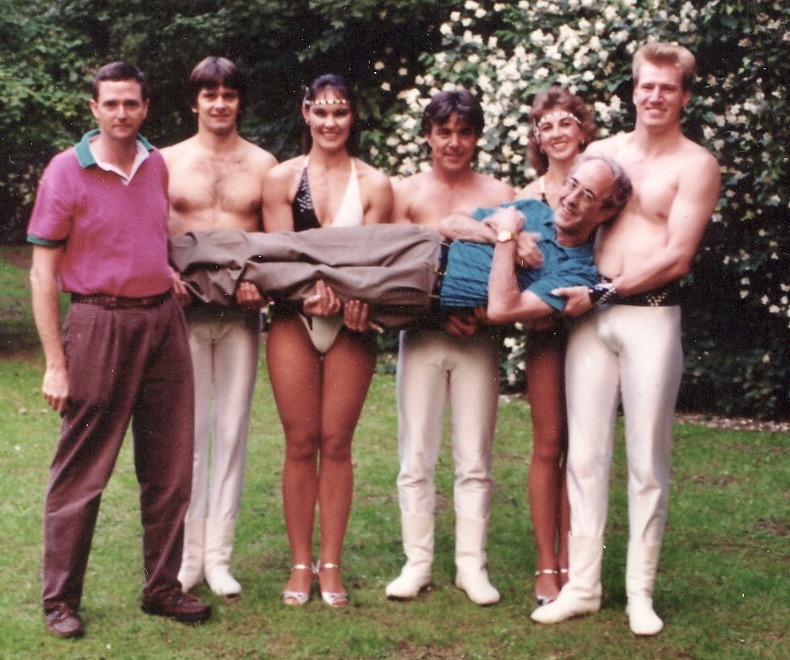Reading: Part V, Flying, Chapter 30 to Chapter 39; Epilogue; p. 183-230
The Flying Rodleighs express some of the deepest human desires.
The desire to fly freely, and the desire to be safely caught.
—Henri Nouwen in a letter to Bart Gavigan, p. 202
As we conclude our Advent book discussion during these final days before Christmas, Henri completes his final flight—the descent from his hotel window to the waiting ambulance, visits in the hospital with his father and siblings and his friend Nathan, the hopefulness of the apparent passing of danger, Henri’s death from an unanticipated massive heart attack, his two funerals, and finally being laid to rest with other members of his Daybreak community.
Author Carolyn Whitney-Brown shares Henri’s experiences while on sabbatical during the final year of his life, including several private jet flights into a “beauteous new world” (p. 185) to discuss spirituality with Joan Kroc, heir to the McDonald’s fast food fortune, and his last meeting with the Flying Rodleighs in July 1996. Henri was flying—he had fully recovered from his earlier breakdown, he was continuing to grow in his spiritual insights (many prompted by his friendship with the Rodleighs), and he was anticipating a new role at Daybreak where he would have more time and freedom to write. He was also doing too much and he ended his sabbatical exhausted, which contributed to his untimely death.
Throughout out time together, I have been looking at the photo of Henri, his friend Frank Hamilton (far left) and the Flying Rodleighs, trying to identify the trapeze artists by name. I made my best guess and sent it along to Carolyn. She replied, “Haha! Good try but…” and then she provided the correct answer.

Now it’s your turn. In the comments, identify the members of troop from left to right. I will update this post with the correct answer on Wednesday morning.
(Photo by Ron P. van den Bosch)
Answer: The Flying Rodleighs (l to r): Rodleigh, his wife Jennie, Joe, Rodleigh’s sister Karlene, and Jon.
As always, you are invited to share what touched your heart in this week’s reading. You might also review the entire book to share any insights you gained throughout the story. In addition, we’re pleased to have author Carolyn Whitney-Brown join us this week to reply to your comments and questions. She will participate in the discussion in the same way that you do—by posting and replying to comments. If you have questions or comments for Carolyn, please post them and you can expect Carolyn’s personal response generally by the following day.
Before closing, I’d like to share something I discovered this week. Carolyn quotes Rodleigh Stevens saying, “Sometimes I think that Henri desperately wants to be accepted, especially by God… I think he sees in us a visual representation of his spiritual feelings, something that he feels within himself.” (p. 195) Rodleigh’s perceptive insight is supported by something Henri wrote on prayer in 1972 in one of his earliest books, With Open Hands: “When you are invited to pray, you are asked to open your tightly clenched fist… A first prayer, therefore, is often a painful prayer because you discover you don’t want to let go. You hold fast to what is familiar, even if you aren’t proud of it. You find yourself saying, ‘That’s just how it is with me. I would like it to be different, but it can’t be now. That’s just the way that it is and this is the way I’ll have to leave it.’ Once you talk like that, you’ve already let the hope for a new life float by… When you want to pray, then, the first question is: How do I open my closed hands?”
During the intervening two decades, Henri suffered his emotional and spiritual breakdown and through Rembrandt’s painting The Return of the Prodigal Son and his counselors, Henri came to a deep understanding of God’s unconditional love and that we are all the Beloved. And as God’s beloved we are called to live with joy and gratitude on our life’s journey. But in order to do so, we often have to let go of what is familiar, the things that are holding us back. Rodleigh was right. Henri had long wanted to be accepted by God—or, better, to be caught by God. The Flying Rodleighs provided a visible, physical metaphor of the spiritual life—one in which we are all called to let go, fly, and trust, trust, trust that we will be caught by the One who loves us.
As we conclude, on behalf of the Henri Nouwen Society, I want to wish each of you a blessed and joyous Christmas season. It has been my privilege to share this Advent journey with you. I’m grateful to each of you for your participation, whether you posted comments or followed along silently. I’d like to recognize and express my thinks to those who chose to share their thoughts and insights that built up our Advent community. We hope you will join us for our Lenten book discussion that will begin on Ash Wednesday, February 22, 2023. The book selection will be announced in the coming weeks.
And as Henri’s favorite saint, Francis of Assisi, said to those he met, “May the Lord give you peace” in this most wonderful time of the year.
Ray
